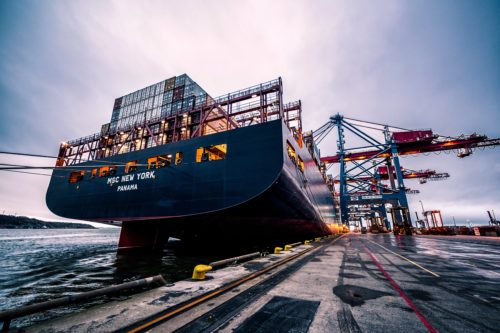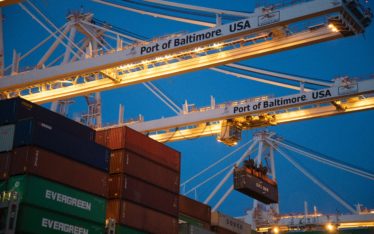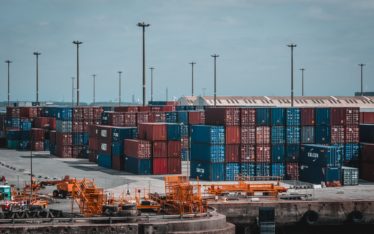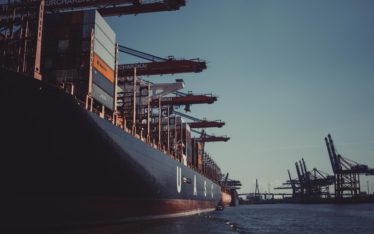Review of the year 2021 for the maritime transport of containers.
After a year 2020 marked by the shock of Covid-19, in 2021 ports and terminal of containers has not been discouraged. Indeed, some important points of the year 2021 are to be remembered:
- There is a form of self-regulation of the market. The inflationary impact of ocean freight rates on retail prices is beginning to be pointedout. If we add to this the expected deployment of new capacity, it can be reasonably estimated that the period of overheating has passed. Freight rates above 5 digits per 40′ container are moving away from Asia/Europe
- In addition, shippers, who are starting to come to their senses after the 2021 sledgehammer, feel that the tide is turning a little more in their favor, especially if they manage to conclude the tender negotiations after the Chinese New Year.
- Having managed to raise the “average basket” around 6,000 to 7,000 USD per 40′ container on the Asia/Europe axis in 2021 is a masterful result compared to the 2,500-3,000 USD of 2020, especially since this year, volumes were at the rendezvous. The 4th quarter results of shipping companies will remain very good, although there are signs of erosion of freight rates at the highest levels.
- Several major shipping companies have begun to expand their scope of This is particularly the case for Maersk, which claims global integrator status, and to a lesser extent for CMA CGM and Cosco
- With the pandemic, shippers have measured the risk of sourcing dependency. The time has come for diversification, even the search for proximity. A strategy also fuelled by environmental concerns. After the 2020 decline, global CO2 emissions are returning to their pre-pandemic level.
If you want to know more about it, read the article : Bilan du transport maritime de conteneurs en 2021 (upply.com)
Congestion in the container: Le Havre and Dunkirk winners
In five months, the 18 weekly services between Asia and Northern Europe have eliminated 383 European stopovers, including 18 in Le Havre. The Norman port, which has regained substantial market share, is one of the few that have also had unscheduled stopovers while Dunkirk is even more successful.
According to Alphaliner’s assessment, there are the main reasons for these cancellations: the need to reduce expectations in certain ports, mainly Felixstowe, Antwerp, Rotterdam, and Hamburg; the need to remove affected people in order to reschedule rotations closer to their schedules and complete cancellations of trips. However, these cancellations of calls have little impact on the results of the ports.
In addition, 77 unscheduled calls were added, mainly in four ports spared by congestion: 24 in Wilhelmshaven and 16 in Bremerhaven to escape Hamburg and the elbe ascent, 11 in Le Havre and 8 in Zeebrugge. Dunkirk also won a stopover.
If you want to know more about it, read the article : https://lemarin.ouest-france.fr/secteurs-activites/shipping/41805-congestion-dans-le-conteneur-le-havre-et-dunkerque-gagnants
CI5 in French Guyana
The year 2021 will have been under the sign of Ci5 and Smart Ports for the DOM-TOM. After the Indian Ocean (Mayotte), the Caribbean (Martinique), and the Pacific (Papeete and Noumea), it is now Guyana that is modernizing and equipping itself. The first vessel managed by the new Ci5 port logistics system is the container ship CMA-CGM SAINT-LAURENT which was deployed to the port of Dégrad des Cannes on 2 December 2021. Today, more than 200 Guyanese users benefit from the most complete Community System Ports.
Rémi Julien; Chairman of the Management Board of MGI said: “The MGI teams are proud of the enduring and renewed confidence of our long-standing partner GIP+. With this latest deployment, all our French customers benefit from the progress of Ci5, which will accompany them for many years. »
The arrival of a Kalmar robotic wallet.
Kalmar offers a future range of smart, flexible, and autonomous mobile equipment solutions designed to improve safety and eco-efficiency without compromising productivity. This new range will include the Kalmar RoboTractor, RoboLifter, RoboStacker and RoboHandler. Some prototypes are currently being tested at different sites around the world. The aim is to increase the accessibility of automation and robotics technologies to new customer segments, including distribution centers and heavy logistics, in addition to ports and terminals.
“Our intelligent and flexible Robotic Portfolio is designed to be easy to deploy, maintain and scale for customers across a wide variety of segments. With this new portfolio we are laying the foundations for a future driven by fully autonomous, unmanned material handling with zero accidents, zero emissions and maximum productivity.”
If you want to know more about it, read the article: Kalmar announces Kalmar Robotic Portfolio – Port Technology International










